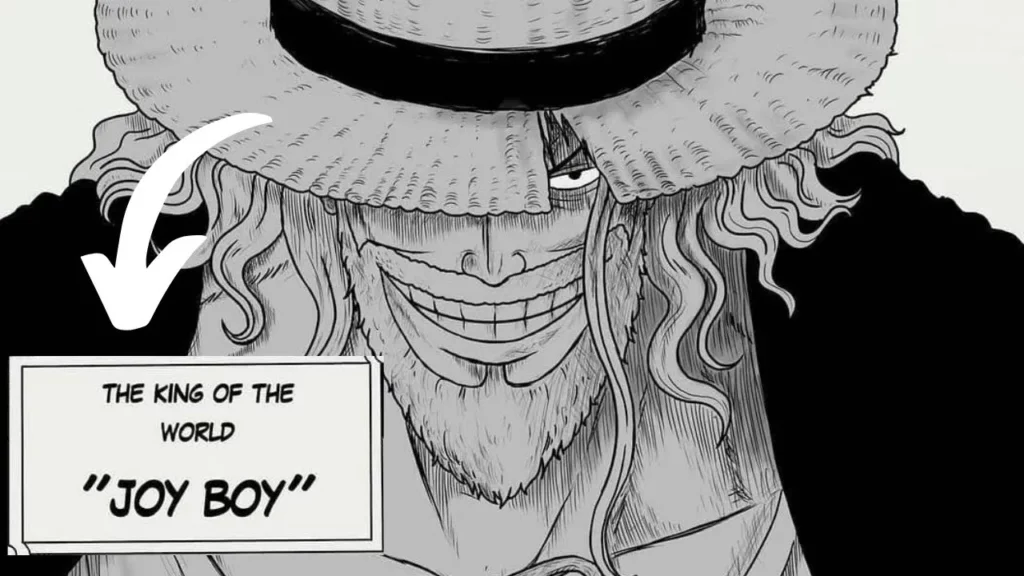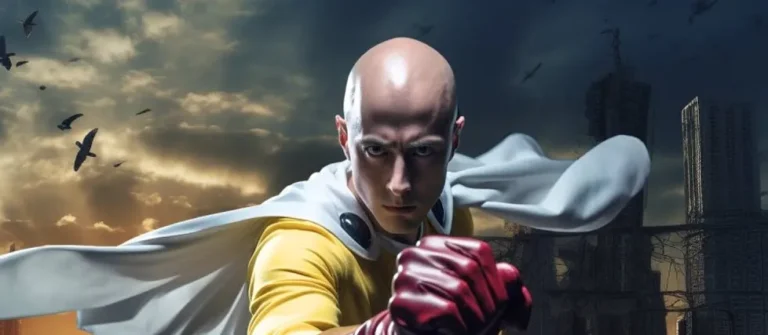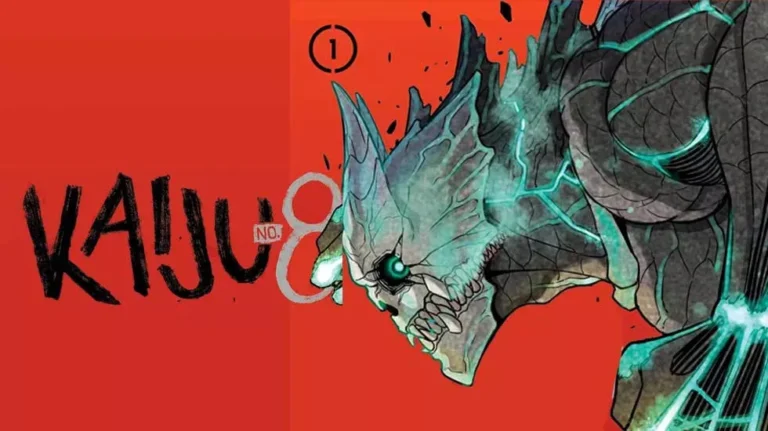Unraveling the Mystery of Joy Boy in One Piece: A Comprehensive Exploration

Joy Boy in One Piece: The world of “One Piece,” created by the legendary manga artist Eiichiro Oda, is renowned for its rich storytelling, memorable characters, and epic adventures. Among the many mysteries and enigmatic figures that have intrigued fans, one character stands out prominently – Joy Boy. We will embark on a journey to unravel the mysteries surrounding Joy Boy, exploring his history, significance in the “One Piece” world, fan theories, and the potential role he may play in the unfolding narrative.
Introduction
Joy Boy is a name that has been whispered and speculated about in the “One Piece” community for years. Yet, despite the emotional discussions and theories, much about this mysterious figure remains shrouded in ambiguity. In our quest to understand who Joy Boy is, we will venture through the following sections:
- The Ancient Kingdom: An introduction to the enigmatic Ancient Kingdom and its connection to Joy Boy.
- The Void Century: An exploration of the Void Century, a pivotal period in the history of the “One Piece” world.
- The Poneglyphs: Understanding the role of the Poneglyphs, inscribed stones that hint at Joy Boy’s story.
- The Archeologists: Delving into the world of scholars and archeologists who seek to uncover the past.
- Joy Boy’s Legacy: Analyzing the legacy of Joy Boy and its impact on the Straw Hat Pirates.
- Fan Theories: A look at some of the most intriguing fan theories regarding Joy Boy’s identity and significance.
- The Role of Joy Boy in the Endgame: Speculations about how Joy Boy might influence the culmination of “One Piece.”
- Conclusion: Summing up our findings and what the future may hold for Joy Boy in this epic tale.
The Ancient Kingdom

The Ancient Kingdom is a pivotal piece of the puzzle when it comes to understanding Joy Boy. Little is known about this kingdom, but it plays a significant role in the history of the “One Piece” world. The Ancient Kingdom is believed to have existed during the Void Century and was in conflict with the World Government.
The Void Century
The Void Century is a mysterious, hundred-year period in the history of the “One Piece” world. During this time, the World Government eradicated almost all records and information about the events that transpired. Understanding the Void Century is crucial in deciphering Joy Boy’s significance.
The Poneglyphs
Poneglyphs are inscribed stones that contain historical information, and they play a key role in the quest to uncover the secrets of the Void Century. Some Poneglyphs hint at Joy Boy’s existence and the promises he made, adding intrigue to the narrative.
The Archeologists
Characters like Nico Robin, the Straw Hat Pirates’ resident archaeologist, have dedicated their lives to deciphering the Poneglyphs and unearthing the lost history. Robin’s pursuit of this knowledge is closely tied to the mysteries surrounding Joy Boy.
Joy Boy’s Legacy

Joy Boy’s legacy continues to impact the world of “One Piece.” This is particularly evident through the actions and decisions of the Straw Hat Pirates, whose journey and aspirations appear to be linked to Joy Boy’s story.
Is Luffy a Joy Boy?

- Chapter 1044 Revelation: A pivotal moment in Chapter 1044 of the manga sees Luffy awakening his Devil Fruit powers, transforming into Gear 5. During this transformation, Zunesha, an ancient elephant with a history spanning over 1,000 years, perceives Luffy’s heartbeat and proclaims that Joy Boy has returned. This moment serves as a cornerstone for the theory.
- Luffy’s Affinity for Freedom and Justice: Luffy’s character has consistently exhibited a natural affinity for freedom and justice. His charisma and his ability to inspire those around him align with the qualities one might expect from Joy Boy.
- Hito Hito no Mi: Model Nika: The theory posits that Luffy’s Devil Fruit, the Hito Hito no Mi: Model Nika, is the same fruit that Joy Boy consumed. This connection implies a deeper link between their destinies.
- The “Warrior of Liberation”: Zunesha’s reference to Luffy as the “Warrior of Liberation” when he awakens his powers further reinforces the idea that Luffy may be a reincarnation or the next in line to fulfill the role of Joy Boy.
Additionally, several specific manga chapters are cited to support this theory, including Chapter 628, where Nico Robin reads a Poneglyph mentioning Joy Boy’s promise to return, and Chapter 968, which features a flashback to the Void Century where Joy Boy pledges the mermaid princess Shirahoshi. Chapter 1043 describes Luffy’s heartbeat as having the “Drums of Liberation” beat, a sound associated with Joy Boy, and in Chapter 1045, Kaido acknowledges Luffy as Joy Boy after their battle.
While the theory presents a compelling narrative, it’s essential to note that “One Piece” is known for its intricate storytelling and well-guarded secrets. Whether Luffy’s role is indeed that of Joy Boy and what implications this holds for the final saga of “One Piece” remain open questions, eagerly awaited by fans as the story progresses.
Fan Theories
The “One Piece” fan community is renowned for its creativity and speculations. This section delves into some of the most popular fan theories regarding Joy Boy’s identity, his promises, and the ultimate significance he holds in the narrative.
The Role of Joy Boy in the Endgame
As “One Piece” nears its climax, the question of Joy Boy’s role in the endgame becomes increasingly intriguing. We will explore how the mysteries surrounding Joy Boy might contribute to the resolution of the series.
Zunesha

Here are some key points and quotes that Zunesha has provided about Joy Boy:
- Comrades During the Void Century: Zunesha and Joy Boy were depicted as comrades during the enigmatic Void Century. This suggests a close alliance where they work together towards a shared goal.
- Nostalgia and Respect: Zunesha holds nostalgic feelings for Joy Boy, implying a deep and meaningful relationship between them. This nostalgia also suggests a great deal of respect and admiration for Joy Boy’s actions and character.
- Recognition of the Drums of Liberation: Despite the passage of 800 years, Zunesha still recognizes the sound of the “Drums of Liberation.” This familiarity underscores Zunesha’s close association with Joy Boy and his distinctive abilities.
- Luffy’s Resemblance to Joy Boy: When Monkey D. Luffy awakened his Devil Fruit powers during the Raid on Onigashima, his presence was likened to that of the individual known to Zunesha from long ago. This similarity suggests that Luffy may share characteristics with Joy Boy, possibly even being considered his reincarnation.
- Expectation of Joy Boy’s Return: Zunesha has made several references to Joy Boy’s return, indicating a belief that Joy Boy will fulfill a promise made during the Void Century. This expectation adds an element of anticipation and significance to Joy Boy’s role in the series.
In summary, Zunesha’s statements and actions imply a profound connection to Joy Boy, characterized by their shared history, mutual respect, and the belief that Luffy may carry the legacy of Joy Boy in some manner. The nature of this connection and Joy Boy’s true role remain mysteries eagerly awaited by “One Piece” fans as the story continues to unfold.
FAQs
The mysterious figure of Joy Boy in Eiichiro Oda’s “One Piece” has generated numerous questions and discussions within the fan community. In this section, we address some of the most common questions and provide insights into the enigmatic character and his role in the series.
1. Who is Joy Boy, and why is he important in “One Piece”?
Joy Boy is a shadowy historical figure who lived during the Void Century, a mysterious century erased from the world’s history by the World Government. His importance lies in the promises and actions he left behind, which continue to shape the events in the series. Yes. Monkey D. Luffy is a Joy Boy, but it’s still unclear what his role in the story as a Joy Boy.
2. What is the Void Century, and why is it crucial to understanding Joy Boy?
The Void Century is a hundred years shrouded in secrecy, during which the World Government purged historical records. Understanding the Void Century is vital because it holds the key to unraveling Joy Boy’s significance and the true history of the world.
3. Are there any concrete clues or information about Joy Boy’s identity in the series?
As of now, “One Piece” has revealed limited information about Joy Boy’s identity. Most of what we know comes from the Poneglyphs and the efforts of characters like Nico Robin, who are trying to uncover the past.
4. What are the Poneglyphs, and how are they related to Joy Boy?
Poneglyphs are stone tablets inscribed with historical information. Some Poneglyphs mention Joy Boy and the promises he made. They serve as valuable pieces of the puzzle in understanding his role.
5. What legacy has Joy Boy left behind in the series?
Joy Boy’s legacy appears to be intertwined with the Straw Hat Pirates’ journey. Their quest to find the One Piece, a treasure connected to Joy Boy, demonstrates the ongoing influence of his actions on the present.
6. Are there any theories about Joy Boy’s true identity?
Yes, the “One Piece” fan community has produced numerous theories about Joy Boy’s identity, ranging from him being a member of the Ancient Kingdom to more mystical and cosmic interpretations.
7. How might Joy Boy’s story affect the endgame of “One Piece”?
Joy Boy’s story is expected to have a significant impact on the series’ conclusion. The mysteries surrounding him, the Void Century, and the true history of the world are anticipated to play a pivotal role as the narrative reaches its climax.
8. Will Joy Boy’s identity be revealed in the series, or will it remain a mystery?
The revelation of Joy Boy’s identity is a highly anticipated moment in the “One Piece” series. While the story has been deliberate in its revelations, the importance of Joy Boy suggests that more details about him will likely be unveiled as the narrative progresses.
9. How can fans stay updated on developments related to Joy Boy in “One Piece”?
Fans can stay updated by following the manga or anime series, as well as engaging with the “One Piece” fan community, where theories and discussions about Joy Boy are prevalent.
10. Is Joy Boy a central character, or is his role more symbolic?
Joy Boy’s role appears to be both symbolic and central to the overarching narrative of “One Piece.” While he may not be a character in the conventional sense, his presence and actions have far-reaching consequences in the story.
These frequently asked questions provide a glimpse into the curiosity and fascination surrounding Joy Boy in “One Piece.” As the series continues to unfold, the mysteries and significance of this enigmatic character are expected to become clearer, offering fans a deeper understanding of the world created by Eiichiro Oda.
Conclusion
In the ever-expanding world of “One Piece,” Joy Boy remains a captivating enigma, a figure from the past whose legacy continues to shape the present and future. As we navigate through the mysteries of the Ancient Kingdom, the Void Century, the Poneglyphs, and the dedicated efforts of scholars like Nico Robin, we draw closer to unraveling the secrets Joy Boy left behind. Fan theories offer tantalizing possibilities, but only the unfolding narrative will reveal the true extent of Joy Boy’s significance.
In this journey to understand Joy Boy, we aim to shed light on the shadows of the “One Piece” world, bringing us one step closer to comprehending the legacy of this mysterious and elusive figure. As the story progresses and the Straw Hat Pirates’ adventures continue, the ultimate truth about Joy Boy’s identity and the role he will play in the grand tale of “One Piece” remains a source of endless anticipation and fascination.







One Comment